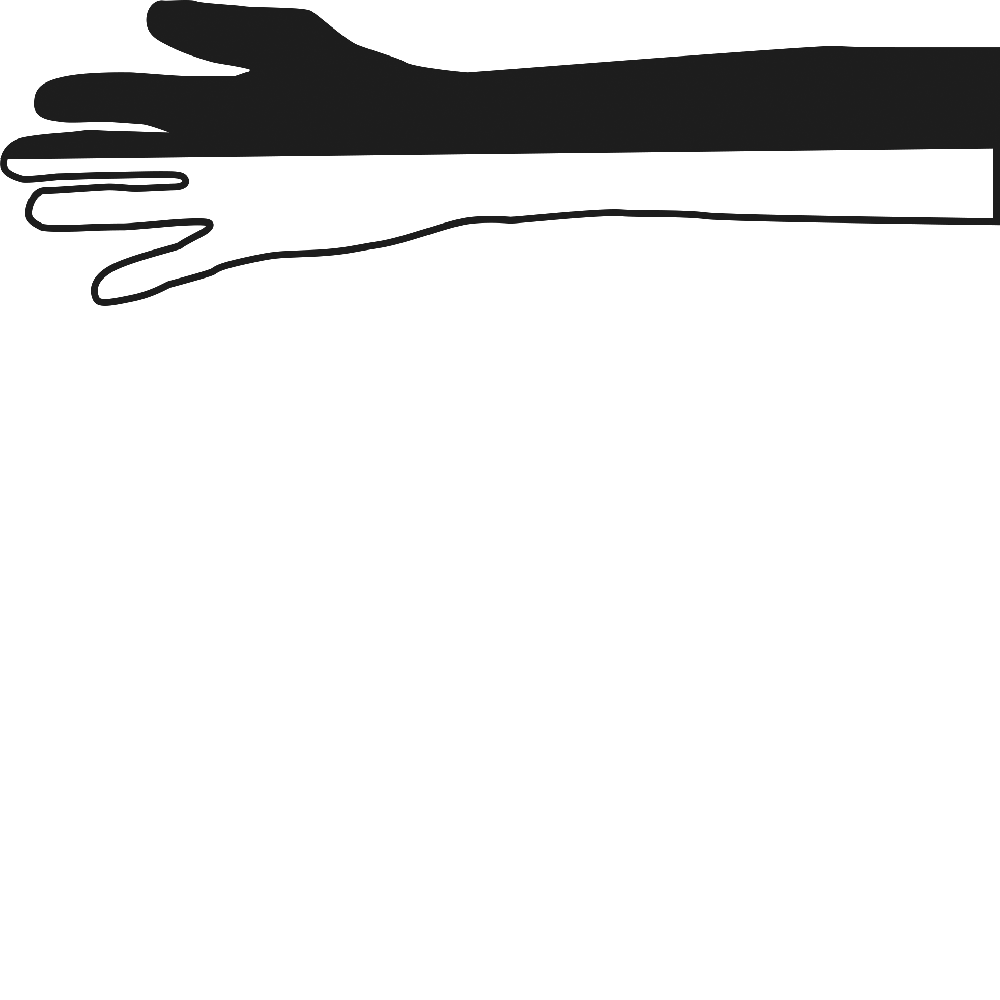Playlist from Harun Farocki and Antje Ehman’s Labour in a Single Shot
- 1. Dario Schvartzstein, Ultra Violet, Buenos Aires 2013
- 2. Maximo Ciambella, Mate and Leather, Buenos Aires 2013
- 3. Mena el Shazly, Coke Bottles, Cairo 2012
- 4. Nguyen Trinh Thi, Weaving, Hanoi 2013
- 5. Daniel Ulacia, Colocando, Mexico City 2014
- 6. Toshi Seeger, Afro-American Work Songs in a Texas Prison, 1966
As a point of entry I want to start with the video Weaving made in Hanoi.
So what do we see? There is a loom in motion. The screen is divided horizontally. The machine, a complex architecture of joists and metal (Walter Benjamin’s dream materials of the nineteenth century) is in motion.
It’s a beautiful rusty old machine and it moves in a most elegant and pleasing way. It makes a sound, it looks like it is from another time – maybe even Benjamin’s.
Behind it, slowly revealed is the weaver, a woman who collects from this loom a tapey lace that she ravels into a ball. She is dressed in pink and white from head to toe. It’s a great outfit.
But somehow her dexterity and her role as captain of this loom is not what the eye is directed to. What we are guided to look at instead are the exquisite joists and curves of the loom that dances almost of its own volition and in fact continues after she bows off stage.
What we see is a reversal — where the machine somehow is the agent, endowed with life, dancing around, doing its thing. The woman, inspite of her skill and cinematic quality, literally is behind the machine. It’s a Grandevillian image if there ever was one, where the commodities come to life and take centre stage.
Or from another point of view she is behind the machine, as Franco "Bifo" Berardi states in After the Future his history of the end of the future:
Futurism exalted the machine as an external object, visible in the city landscape, but now the machine is inside us: we are no longer obsessed with the external machine; instead, the “info-machine” now intersects with the social nervous system, the “bio-machine” interacts with the genetic becoming of the human organism…
In the mechanical era the machine stood in front of the body, and changed human behaviour, enhancing their potency without changing their physical structure. The assembly line, for instance, although improving and increasing the productive power of laborers did not modify their physical organism nor introduce mutations inside their cognitive ability. Now the machine is no more in front of the body but inside it. Bodies and minds therefore cannot express and relate anymore without the technical support of the bio machine.1
Bifo points out that Marinetti’s Futurist Manifesto was published in 1909, the same year that Henry Ford initiated the first assembly line in Detroit. This is no coincidence, nor, he states, is it a coincidence that the most fiery proponents of futurism were in the agrarian economies of Italy and Russia. The machine stood in front of the labourer paving the way to an industrial future. As we all might already know, Bifo says we are in a different time now. The machine is not in front of us, it is inside of us, and makes us anxious and depressed. Our souls are on the factory floor. The machine is not outside of us it is in us. We are sped up from the inside out at the pace of an accelerated capitalism.
But what if we stopped for a second and questioned the polarity of this distinction – the machine in front of us, as opposed to the machine inside of us. What if we blurred this distinction between the machine being inside or in front of the labourer? Or we found a threshold where the ambivalence of both modes of the bodily and the machinic coincided? Through these videos I want to consider two possible thresholds where the machine and the body meet in uneasy contretemps: in the gesture whose endpoint is the skin, and in the voice whose endpoint is singing.
Through these two thresholds – the gesture and the voice – I want to look at these videos anew. Not in any celebratory way, but as is. To think about the role of embodiment and the machine that straddle what Thomas Elsasser so eloquently describes: the knife’s edged constitution of labour as hovering between a recognition of its dignity and its dehumanization.
Gesture
What I am thinking about in relation with the liminality of the gesture is in the very specific context of its relation to the machine and the labour process, where the gesture is only intelligible in its mediating role with the machine.
So in Coke Bottles shot in Cairo – we see two laboureres on screen tossing packages of coke bottles in a chain, from one to the other and then to another person offscreen. At first glance this sequence of gestures could be considered to be almost machinic in its synchronicity. And yet what destabilizes this most dramatically is the stumble, when the man closest to the camera moves too quickly and in his fumbling recovery, throws a crate to the side. He also pauses, he makes strange nods. The fumble does not throw him off, but maybe it throws us off as viewers. The glitch calls attention to the machine like nature of the tossing, but also the subjectivity of those making the gestures. The breaks in the rhythm make us aware of the rhythm itself.
Or in Ultra Violet shot in Buenos Aries, we hear what might be characterized as the industrialiazation of the voice of the horse racing announcer – it’s sped up quality just inside of the threshold of intelligibility. He sounds excited. But consider his voice in contrast with the comportment of his body. His voice is fast but his body is slow. He moves, picks up his binoculars almost absentmindedly, and points them to the screen rather than outside. He is operating at two temporal registers, where his slow relaxed gestures give us a glimpse of how habituated he is, how his attention can be there and elsewhere.
An attention to gesture also might take us to that of the camera person who is necessarily offscreen. When the camera is controlled, and does not call attention to the gesture of the cameraperson as it is in Ultra Violet the camera person hovers as both present and absent. When the camera is handheld as it is in Coke Bottles or in Mate and Leather, its contingency parachutes us into the time and space of action.
I want to think about how at its limit the gesture and its relationship to the machine takes us to the skin through an example that takes us away from the videos for a moment. I want to segue to a history of fingerprints, the gestures and machines that produce them, and finally their destruction.
In 1858 William Herschel who was the Chief Magistrate of the Hooghly district was finalizing a contract with Rajyadhar Konai to purchase a binding material to build light roads. When Konai was about to sign the contract, Herschel was inspired to ask Konai to make a stamp of his hand on the contract by pressing his hand upon some ink and then making an imprint on the contract. Herschel had no thought of what this mark looked like. Rather he wished to implicate Konai’s hand and by extension his body into the contract through this gesture: “I was only wishing to frighten Konai out of all thought of repudiating his signature hereafter.” His main intention was to frighten Konai into honouring the contract by marking him and using that mark to bind him to the contract.
Consider an afterlife of this gesture: the collecting of biometric information at a national or international scale. In India this is a “voluntary” system launched at a massive scale to create a national ID – for a population with a very high illiteracy rate and low income levels so that alternate forms of ID – passports or drivers licenses are not as common.
Or consider another afterlife, the Eurodac – the European database that collects the fingerprints of illegalized migrants entering the EU. The records of these prints are used to send migrants back to their first country of entry in order to be deported.
A huge deterrent for illegalized migrants in the EU is the requirement that they seek asylum in the first EU country that they had been fingerprinted in. The threat of being deported back there, their first country of entry, is so unacceptable to many migrants that it became a common practice for them to attempt to erase their own fingerprints – by drinking chemicals and by burning off the skin on their fingertips.
And consider from this point of view the response and resistance to this database on the part of the migrant who destroys their fingerprints in order to evade detection in the Eurodac database.
Consider then a still from Sylvain George’s documentary film Qu'ils se reposent en revolte that records this act. It is an image of the hands of a migrant who has attempted to burn his fingerprints off so that he can avoid identification. His hands then carry the imprint of the law and of his own journey. This act is painful and the trace it leaves is difficult to look at. And this is a sisyphian task as fingerprints always grow back.
But what is relevant in this instance to the distinction that I trace between the machine in front of the body and the machine in the body is the way in which this gesture is only intelligible as a response to the Eurodac, as a response to the machinic collection of this biometric data. The gesture of erasing the fingerprints and the trace it leaves is only painful and debilitating in the life of the migrant outside of this apparatus.
Voice
The second site of liminality that I want to look at is that of the voice. We’ve already considered the fast voice of the horse racing commentator and his slow gestures.
But there are other voices too. There is the terrible pop music singing happening in Mate and Leather. There is the aazan or the call to prayer in Coke Bottles. There’s the singing of the loom in weaving.
These are sounds that all the workers hear. These voices, like the industrialized voice of the horseracing commentator, operate at the threshold of intelligibility, not on account of their speed but on account of their dispersion across the space.
There is a collective listening, perhaps distractedly so. With the aazan, the call to prayer in Cairo, it signals dusk, the end of the working day. It is a collective experience shared to pace the day. It is also part of the massive sound pollution that permeates the city. You never hear it in isolation of other sounds in the city.
Then there’s the Top 40 music that paces the working day of the workers in Mate and Leather. It paces the day and it paces their gestures, it paces their cutting of leather, it paces the passing of the vial of mate - the performance of another collective ritual.
These are shared sounds that form the collective experience of working, that pace the day and pace the gestures of work that I want to push further and radically, to one of the first moments of the dehumanization of labour under modernity – ie in the transportation of slaves across the Atlantic, and the putting of these enslaved people to work on plantations.
There is another set of sonics that comes out of this shared experience of dehumanization of labour that has its birth in the hold of the slaveship that Stefano Harney and Fred Moten describe as haptic. He says:
Never being on the right side of the Atlantic is an unsettled feeling, the feeling of a thing that unsettles with others. To have been shipped is to have been moved by others, with others … In the hold … another kind of feeling became common. This form of feeling was not collective, not given to decision, not adhering or reattaching to settlement, nation, state, territory or historical story; nor was it repossessed by the group, which could not now feel as one, reunified in time and space. No, when Black Shadow sings “are you feelin’ the feelin?’” he is asking about something else. He is asking about a way of feeling through others, a feel for feeling others feeling you. This is modernity’s insurgent feel, its inherited caress, its skin talk, tongue touch, breath speech, hand laugh. This is the feel we might call hapticality …
Hapticality, the touch of the undercommons, the interiority of sentiment, the feel that what is to come is here. Hapticality, the capacity to feel though others, for others to feel through you, for you to feel them feeling you, this feel of the shipped is not regulated, at least not successfully, by a state, a religion, a people, an empire, a piece of land, a totem. Or perhaps we could say these are now recomposed in the wake of the shipped. Refused these things, we first refuse them, in the contained, amongst the contained, lying together in the ship, the boxcar, the prison, the hostel. Skin, against epidermalisation, senses touching … Though forced to touch and be touched, to sense and be sensed in that space of no space, though refused sentiment, history and home, we feel (for) each other …
Soul music is a medium of this interiority on the skin …2
‘Feelin the feelin’ is a point of entry to understand the incomprehensible, how music and voice become vehicles of this haptic experience of being on board a slave ship. This is before a sense of collectivity can be formed, before a language, articulated can be formed contra the state. It’s a sense of a something else that arises viscerally, beyond language’s intelligibility. Its radicality plays out sonically but also as he states at the level of the skin – the pharmakonic surface that is created in the unnameable experience in the hold but also in the sense of touch that becomes the beginning of what Harney and Moten call an insurgency. It is synesthetic this haptic experience – pulling the sense of touch together with the sense of song.
Skin and voice are the sites of contestation and agency. They are literally at the border between techne and body. And its hapticality comes into being in the machine of the hold.
Its afterlife, Harney and Moten state, comes into the continued experience of slavery on plantations and in prisons. Its song continues in the form of work songs, songs on the chain gang. These are soundtracks to work; it paces the gestures of indentured work in the afterlife in the hold.
I want to turn to the recording of the songs on a prison chain gang – as problematically or not – recorded by Pete Seeger. In Wake Up Dead Man, the folklorist Bruce Jackson describes his 1966 trip with Pete Seeger and his family to a prison in Texas to record the chain gang singing by inmates in the Ellis Unit.3 The area near the prison along the Trinity and Brazos rivers made for difficult work and had their own songs, as did the act of cutting trees. This was the legacy of plantation work – a way for workers to keep in rhythm so that none of them would be punished for going too slowly. These work songs, so intimately connected with plantation slavery and chain gangs were in decline as this form of indentured labour went into decline. As a result folklorists came from the north to record this music.
However in this film, it is hard to find the name of even one of these workers, or a shot of their face. The voice over extols the improved prison conditions in this area and the men working on the chain gang move in formation in spotless white throwing their skin into relief. There is an industrial machinic feel to their movement and yet in their singing there is an enervation the viewer feels in the rhythm of song and movement. We see them cutting trees en mass and as one tree begins to tumble, an arrhythmia in their singing erupts. Some call out as the tree tips to the ground but even before it makes contact, the singing begins anew in another wave.
It’s difficult to see the men singing and working in rhythm in their pristine uniforms for the camera, and difficult to hear Pete Seeger talk about these great new prisons. But the presence of the prison guard mounted on his horse looking down on them undermines this. And under the watchful eye of the guard and the camera and Seeger’s voice over, something else happens in this afterlife of the hold, another kind of syncopation of movement that gets the overseers’ job done but also collects from below, in the rhythm and singing, a powerful force that moves this indentured labour in another direction.
I want to stop here at the intersection of gesture and voice that is behind the machine, that contains the machine, that is saved for posterity yet also spoken for by those, like Pete Seeger. And yet, in spite of the cooptation and the speaking for there is a stubborn remainder a haptic ‘feelin the feelin’ that plays out in uneasy juxtaposition.
March 2015
References (Endnotes)
- Franco Berardi, Gary Genosko, and Nicholas Thoburn, After the Future, Edinburgh, AK Press, 2011, Chapter 1.↩
- Stefano Harney and Fred Moten, The Undercommons: Fugitive Planning & Black Study, Wivenhoe/New York/Port Watson, Minor Compositions, 2013.↩
- Bruce Jackson, Wake Up Dead Man, Athens, University of Georgia Press, 1999.↩



